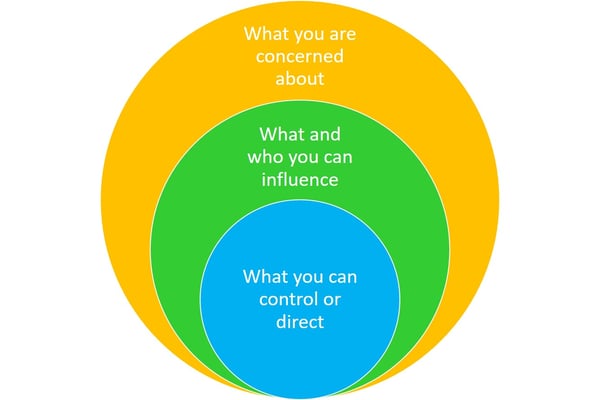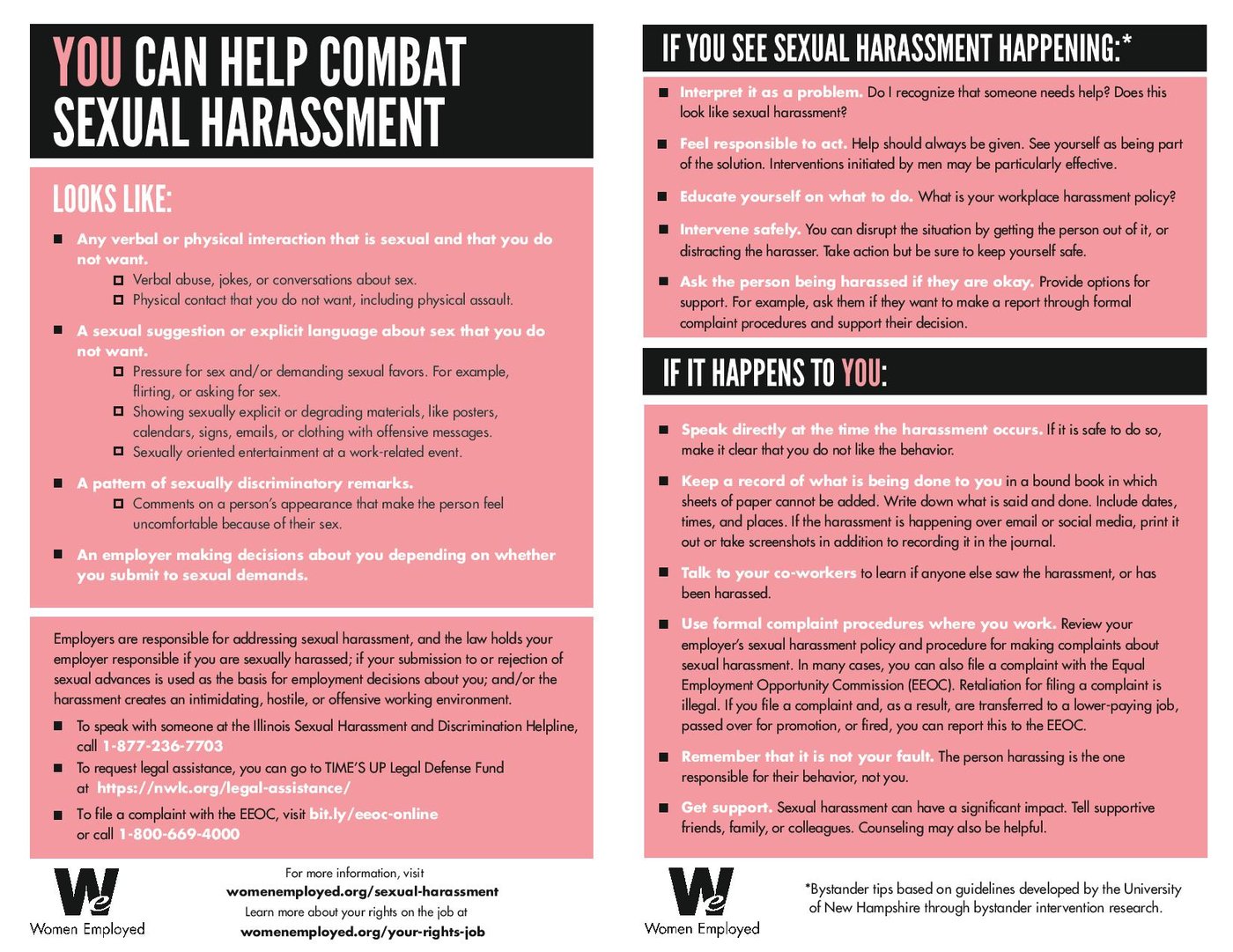Today's guest post comes from Sharmili Majmudar, who champions gender equity and justice as Director of Strategic Partnerships at Women Employed. Women Employed is a 45-year-old organization widely recognized for its groundbreaking work to improve women’s economic status and remove barriers to economic equity. Sharmili develops and leads the organization’s collaborations with employers to improve workplace practices, with a particular focus on scheduling, as well as leading the organization’s work with partners to address sexual harassment and advance an equal pay agenda with a racial equity lens. On International Women’s Day, she facilitated a workshop with the same name as this blog as part of 1871’s Balance for Better programming.

Guest Author: Sharmili Majmudar, Director of Strategic Partnerships, Women Employed
While gender bias can be overt and explicit, it can also show up in subtle, but no less damaging, ways. But there are tactics that any individual, regardless of their position, can use to interrupt gender bias and advance gender equity in the workplace.
We often think of the ability to make change as being connected to power—such as the power afforded by being the boss or a title at the top of the hierarchy. But we each have power via our sphere of influence. Your sphere of influence at work may be connected to your role or it may be connected to teams that you are part of. We all have a sphere of influence. For example, while my sphere of influence can include the people who report to me, it also includes my peers and the cross-functional teams that I belong to.

Women Employed's mission is to improve the economic status of women and remove barriers to economic equity. From our very inception in 1973, Women Employed has leveraged our sphere of influence to crash ceilings and break barriers, fueled by the collective voices and persistent work of women striving together for economic security. A nonprofit advocacy organization, we strive to make systemic changes to improve educational and employment opportunities for all women—we do that through mobilizing people, advancing legislation, influencing decision makers, collaborating with partners and allies, raising awareness, and providing tools and resources that people need to take action—including tools and resource to activate your spheres of influence.
In this moment, we have an increased awareness of issues such as sexual harassment and equal pay, thanks to the #MeToo and the Times Up movements. There is widespread examination of gender bias and inclusion across industries, from the tech sector to the field of economics. A recent report by the nonpartisan Pew Research Center found that significant majorities of men and women in the U.S. found sexism to be a “very big” or “moderately big” problem.
People are talking about it. So what is gender bias? Gender bias is a preference or prejudice toward one gender over the other. Bias can be conscious or unconscious, and may manifest in many ways, both subtle and obvious. We need to address gender bias for several reasons:
-
Our values. Our values, such as fairness and equal opportunity, require that we address gender bias and its impacts.
-
The bottom line. Diversity and inclusion is a competitive advantage.
-
Opportunity cost. One of the impacts of gender bias is that it pushes women to leave companies or to not bring their best ideas to the table. There is a cost to not fully including your people and valuing what they have to offer.
From the early days of Women Employed, when we fought classified ads that specifically named who should and should not apply based on gender, to today, when culturally-coded language in job postings discourages women from applying, gender bias has been a part of the American workplace, starting with the recruitment process and woven into hiring, compensation, evaluation, promotion, and organizational culture.
In the face of such a large and insidious problem, what can you do? As with all things, start with where you’re at.
As a co-worker, consider adopting the tactics of women in the White House during the Obama administration, who echoed and amplified the contributions of women when they were ignored or co-opted.
Think about and act on what you can do when you witness harassing behavior, Women Employed has some tips:

If you’re involved in the hiring process or are in Human Resources, eliminate the practice of asking for previous salary when hiring. Asking for previous salary compounds the gender and racial wage gap, and is unnecessary. Many companies have eliminated this practice, and legislation has been passed in multiple places prohibiting it; in fact, that legislation is pending in Illinois.
See the EEOC’s Select Task Force on the Study of Harassment in the Workplace Report for recommendations on preventing and addressing harassment, including having updated, clear, easy to understand policies.
If you don’t already have them, create an Employee Resource Group, and empower them to make recommendations and monitor progress.
Catalyst also has a number of suggestions:
-
Require Diverse Slates: Ensure that candidate slates for all open positions include two or more qualified women and/or other underrepresented groups.
-
Evaluate Everyone Consistently: Use transparent, standardized, and objective criteria for hiring, evaluation, and promotion decisions to minimize the negative effects of unconscious biases on talent development.
-
Widen Your Net: Ensure that senior leaders don’t only look for talent in their informal networks, which historically benefits men more than anyone else.
-
Revamp Recruitment Processes: Identify stereotypically masculine terms in your job descriptions and rewrite them to focus on objective job requirements. Check for bias embedded in your processes for screening résumés, interviewing applicants, and extending offers.
And if you happen to be the leader of the organization, you set the tone from the top. Be a champion of gender equity. Set up a regular pay equity audit. Require that your managers understand that inclusion and equity are part of their key performance indicators, and one of the factors on which they will be evaluated. Bring initiatives like Women Employed’s Conversations for Change in to facilitate a dialogue on how your company can identify and address gender bias in your policies, protocols, and practices.
This blog continues a conversation that started during my workshop at 1871 on International Women’s Day. In that workshop, and in this blog, I ask you to consider: what you are concerned about; what and who you can influence; and what you can control and direct.
As you consider your many spheres of influence, we encourage you to stay connected to Women Employed, so we can work together to advance gender equity in the workplace.
Sign up for WE Action Alerts and we will deliver timely and impactful actions on issues that matter right to your inbox. One action you can take right now is to call your Illinois senator and urge them to strengthen the Illinois Equal Pay Act by voting yes for the No Salary History bill. Visit womenemployed.org/act to get all the information you need to exercise your influence today!
Stay informed. Subscribe to our monthly e-newsletter, to get news and insider updates on our issues, perspectives from WE staff, and interviews with partners and advocates.
Celebrate the Power of Women! Join Women Employed on May 9th for an energizing conversation with influential leaders about manifesting and celebrating the power of women from the boardroom to the ballot and beyond. Plus, meet our new CEO, Cherita Ellens, and get a glimpse of what’s on the horizon for Women Employed. You won’t want to miss the energy and inspiration as 1,000 advocates and business and community leaders gather for our signature annual event.
The opinions of our guest bloggers are their own and do not always reflect those of 1871. To learn more about Sharmili Majmudar, find her on Twitter @sharmili_m or follow @WomenEmployed.


